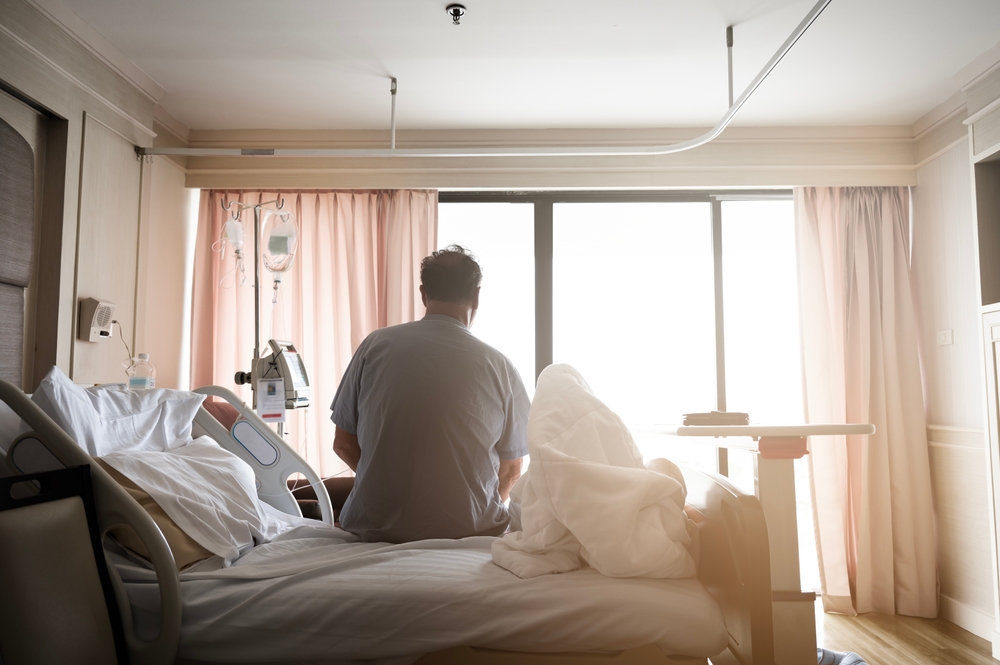New Australian research shows the extent of the use of involuntary psychiatric admission, and the risk that it may be imposed disproportionately on some patient groups.
Involuntary hospital admission is a treatment we like to think of as a last resort. Governments around the country agree that it is a sign of a system not intervening early or effectively enough.
Yet despite the best intentions, involuntary hospital admission continues to be a huge part of the provision of acute psychiatric care in Australia. And our newly published research shows that some groups of Australians, including people born overseas or from socially marginalised groups, may be more susceptible to it than others.
Our study, published in the British Journal of Psychiatry Open, examined the data routinely collected in more than 166 000 episodes of care in New South Wales, making it the largest study internationally of involuntary admissions. Most admissions (54%) involved at least one episode of involuntary care.
The strongest association with being treated involuntarily as opposed to voluntarily was related to diagnosis. People suffering from psychosis and organic brain diseases causing mental illness, such as dementia and delirium, were more than four times as likely to receive their treatment on an involuntary basis.
Being brought to hospital via a legal means, such as by police, was also very strongly linked to involuntary treatment, with an almost five-fold increased odds of involuntary status.

These findings are not surprising given the legal framework underpinning involuntary treatment in NSW, which requires that the person be suffering from a mental illness (defined by the presence of symptoms including delusions, hallucinations or severe disturbance of mood), that they need protection from serious harm, and that no other less restrictive care is available to them.
However, a closer look at our results identifies several non-clinical factors that are associated with involuntary treatment. People born in Asia were 42% more likely to be treated involuntarily than people born in Australia, while people who were born in Africa or the Middle East were 32% more likely. Overall, people who spoke a language other than English were 11% more likely to receive involuntary treatment.
Having private health insurance was associated with a decreased likelihood of involuntary treatment as was being referred through a community health centre or outpatient unit.
It should be noted that these results are controlling for diagnosis, so if two hypothetical patients presented to hospital, one patient born overseas and one in Australia but both with a similar clinical history, the overseas-born patient would be more likely to receive their treatment on an involuntary basis.
Despite using large scale, routinely collected clinical information, our study was epidemiological in nature and did not directly measure many important attributes of the person, their illness or the service contact that would give a full picture of why this occurred. The decision to admit on an involuntary basis is multifaceted and there is unlikely to be one single answer. It could be that we are not providing strong enough outreach into some community groups to ensure that treatment is received before a person gets unwell enough to require hospitalisation. Or, at the point of presentation to the emergency department, is there a lack of culturally sensitive care that enables a safe plan to prevent hospitalisation, or allow it to be undertaken on a voluntary basis?
Given the pervasiveness of racism in our society, there is also no reason to rule out racism as a contributing factor, both systemically within mental health services or individually among clinicians. Psychiatry has a shameful history when it comes to racialised diagnoses, and we have a responsibility to remain open and alert to the ongoing risks of racism within our own practice.
Why is such a high proportion of treatment involuntary?
Another question that remains is why our hospitals have come to rely so heavily on involuntary treatment. This is not a phenomenon unique to Australia — many jurisdictions are struggling to meet lofty goals to reduce involuntary treatment. One theory is that a reduction in mental health beds relative to population has led to only the most unwell people (who are theorised to be more likely to decline treatment) being able to secure an inpatient psychiatric bed. Another possibility is that there has simply not been enough energy and resources put into the kinds of community interventions that may decrease the requirement for coercive hospital admissions.
As doctors, our guiding principle must be “first do no harm”, but involuntary inpatient admission is not without its potential harms, both during the admission but also potentially to the person’s ongoing trust in and willingness to engage with treatment in the long term.
As a society, we seem to imagine that doctors will be able to predict and prevent all harms by forcing treatment on patients even if they are unwilling to receive it. In some states and territories of Australia, this includes forcing treatment on people who retain the capacity to decline treatment (due to mental health acts using substituted decision making rather than capacity tests); something that would be unthinkable in any other area of medicine.
In light of the recent tragedy at Bondi Junction, inevitably we will see people who will hold the false hope that more compulsory treatment will prevent such a horrible event from happening again.
But of course, tragedies such as suicide and homicide are such rare occurrences, and no-one has ever been able to develop a model for accurately predicting, let alone preventing, these events. Other research shows that involuntary treatment may not be protective against suicide; it has even been associated with increased odds of inpatient suicide, and violent behaviour. Population approaches that make life better for all people — for example by decreasing inequality and racism, and providing high quality, non-traumatising medical care and social supports for all — are far more likely to be effective at reducing deaths related to mental illness than continuously increasing our reliance on involuntary care.
While we wait for our society to became brave and ambitious enough to tackle these issues, we urgently need to improve the evidence base underpinning involuntary psychiatric treatment and develop evidence-based strategies to decrease it.
Amy Corderoy is a psychiatry registrar and PhD candidate at the University of New South Wales. Prior to becoming a doctor she was a journalist who worked for a number of publications including as the health editor of the Sydney Morning Herald and a writer for Australian Doctor and Specialist Updates.
The statements or opinions expressed in this article reflect the views of the authors and do not necessarily represent the official policy of the AMA, the MJA or InSight+ unless so stated.
Subscribe to the free InSight+ weekly newsletter here. It is available to all readers, not just registered medical practitioners.
If you would like to submit an article for consideration, send a Word version to mjainsight-editor@ampco.com.au.

 more_vert
more_vert
Thank you for a good article highlighting the deficiencies of a somewhat good system we have .Every system or law will always have room for improving things as is with the INVOLUNTARY admissions.As we are becoming more and more multicultural ,laws and ways we do things will needs changes .
Thankyou for this thought provoking piece, my mind at least, Amy Corderoy. I look forward to any further research the topic you may have.
Kind regards,
Kaete Walker. Mental Health Clinician/Clinical Nurse Specialist
Thank you for highlighting what has been the neglected, dare I say taboo, topic of race in psychiatric practice and research in Australia.
I have sent the article on the PREMHA WhatsApp group (Psychatrists for Racial Equity in Mental Health Australia). A group I founded and now led by Daud Saeed (Sydney)